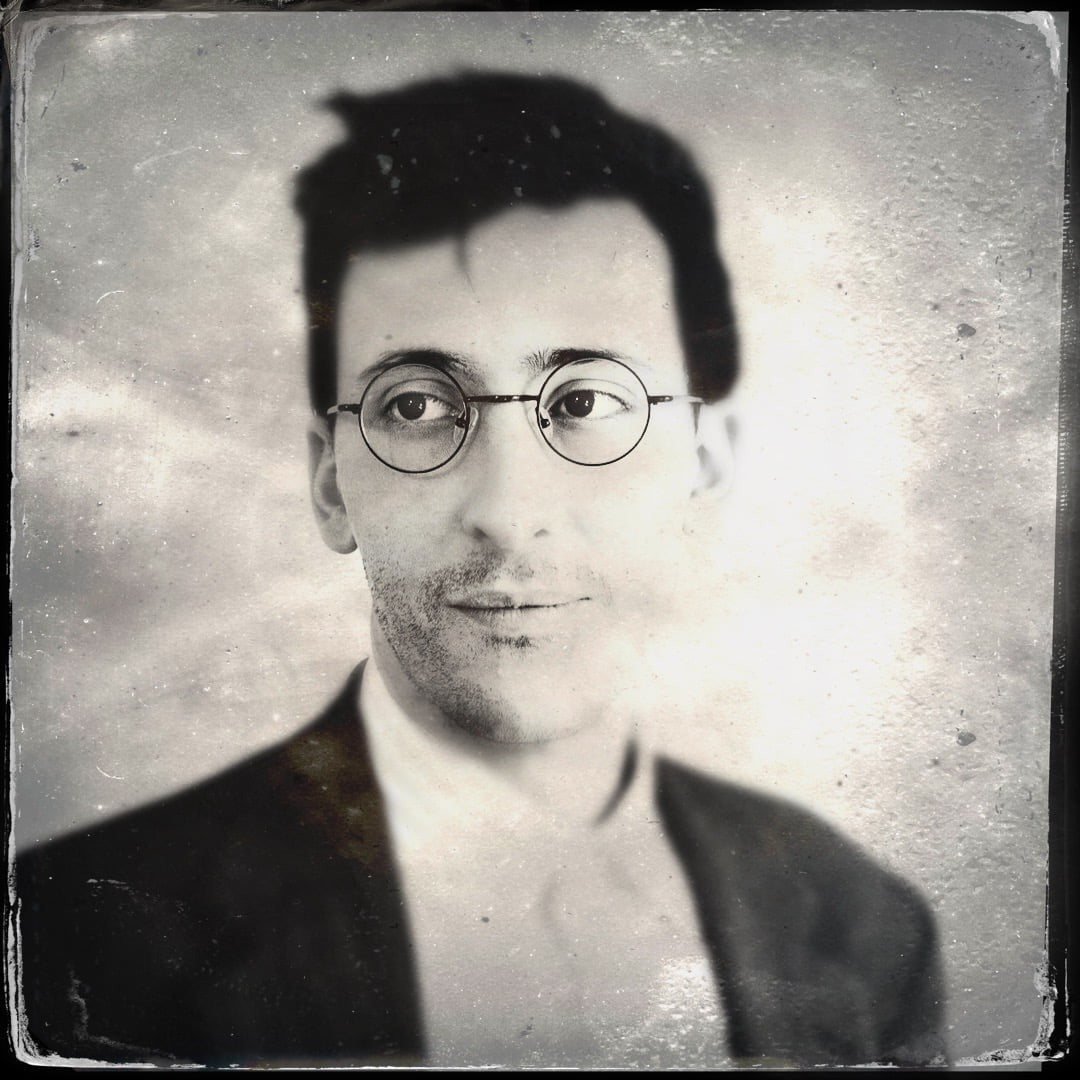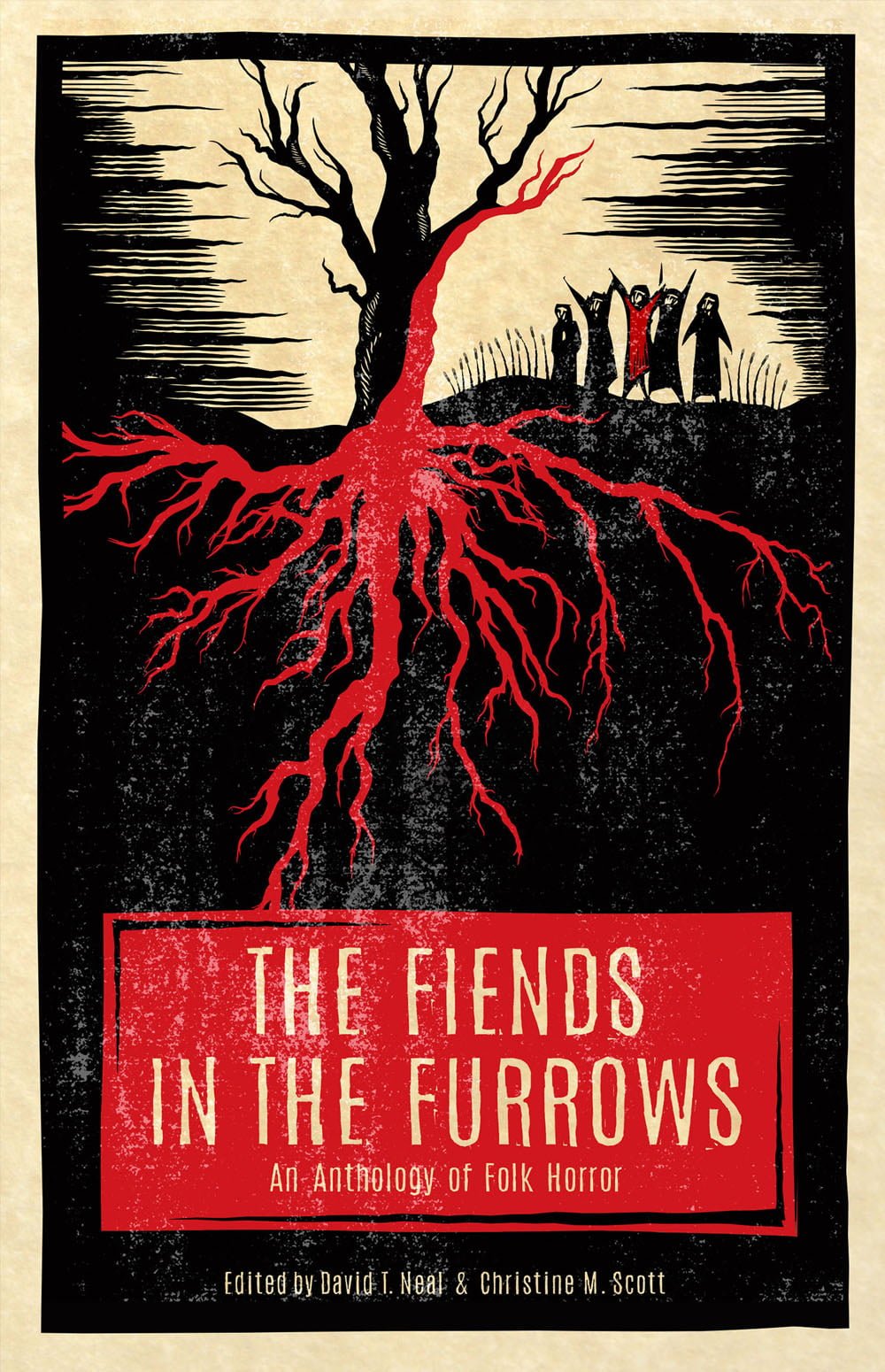AUTHOR SPOTLIGHT: Romey Petite

Romey Petite is recognizable by his wire-rimmed spectacles, pinstripes, and suspenders. He loves reading and writing fairy tales, myths, and magical-realist stories that interweave elements of the sacred and mundane. Originally trained as an illustrator, he graduated from the Center for Cartoon Studies and spent some time self-publishing comics before trying to tell stories that don’t require pictures to lean on. His short fiction has been published in 3Elements Review, Scott Thrower’s podcast Fairy Tales for Unwanted Children, Coffin Bell Journal, Luna Luna Magazine, and Moonchild Magazine. Along with cartoonist Laurel Holden, he is co-author of the illustrated middle-grade reader’s novel Spiderella: The Girl who Spoke to Spiders. He originally hails from New Orleans and now lives in a sleepy little American town with his partner and their pet corgi.
The Fiends in the Furrows: An Anthology of Folk Horror
“Pumpkin, Dear”
It depends on where I’m living. In my hometown of New Orleans, I loved the springtime most of all. I also tended to prefer the spring when I was studying cartooning in Vermont. When I moved to North Carolina two years ago I started really struggling with the abundance of pollen clotting the air here. It’s definitely changed my feelings with regards to what has typically been my favorite season.
What drew you to Folk Horror?
Honestly, it was moving to the middle of nowhere in NC. I’m a city boy—that will never change. Writing “Pumpkin, Dear” went hand-in-hand with my everyday apprehensions of wide open spaces, dense forests, and being chased into an abandoned rickety structure by villagers wielding burning torches. Fortunately, the latter of those hasn’t happened to me—not yet.
What does Folk Horror mean to you?
I think Folk Horror cultivates a sense of isolation in the reader. It doesn’t necessarily have to mean a character is living all by themselves in the woods or a cornfield with grain silos, but, in any case, the setting—a sense of place—is really important to the narrative. Tradition, too, has its place—rituals that have lingered due to the eddy pool of rural life. Shirley Jackson’s short story “The Lottery” perfectly embodies all of these things for me. I can imagine few things quite so horrifying as growing up in a carefully-knit community—say, a small town where all the families have known one another for generations—and then watching those very same people turn against you in the name of a bizarre tradition masquerading as self-preservation. I also think an important element in Folk Horror is the connection to oral storytelling. There’s usually a sense, even when reading words on the page, that the story you’re hearing is being told and has been told before—often a speaker or a raconteur is present to relate the tale to readers.
How would you describe it to someone?
Watch the original Wicker Man (1973). It shares some of the same themes of isolation present in “The Lottery”—depicting a community bound by tradition—but it centers around an outsider entering into an unfamiliar world. Being a stranger in a strange land—that can make for good Folk Horror.
What is the most Folk Horror thing you’ve seen/encountered in your community?
Where I’m living right now there seems to be two kinds of people: Old money that comes down from New England to spend their wealth on horses and lots of military families with government money to burn on inflating the local housing market.
Among the horse-people can be found a fixation with fox-hunting. There’s even a yearly Blessing of the Hounds on Thanksgiving Day. Everywhere I go there are places named for foxes—restaurants, subdivisions, golf resorts—it’s really odd. The fox seems to have become a symbol in the local lore—there’s even this big mural of a bunch of hounds chasing a poor fox on the display at the bank just down the street from the apartment building where I live. I relate to foxes as a trickster figure, so I definitely didn’t find the abundant imagery of them running for cover from hunters and dogs to be particularly welcoming upon my arrival.
As for the military families, they like their patriotism—and so does the sizable community of Baby Boomer retirees. The town definitely goes out of its way to make jingoistic-types feel especially welcome—with discounts at all the local businesses, lots of parades, and American flags everywhere. There’s a military base not too far from downtown so you can hear soldiers practicing shooting off heavy artillery cannons late at night. I never will get used to how it rattles the glass.
What writing projects do you have next?
My chapbook Horrorscope: Stories is forthcoming from Moonchild Magazine’s Moonchaps imprint in November. I’m currently hard at work with editor and Moon-Mother Nadia Gerassimenko and artist C. A. Nieto to create the finished book. I’ve also got a short story that will be debuting in Rose Caraway’s The Dirty 30 anthology—it’s a re-telling of the myth of Cupid and Psyche. Lastly, I’m working on the sequel to my illustrated middle-grade novel (with cartoonist Laurel Holden) Spiderella: The Girl Who Spoke with Spiders. In the meantime, I’ll still be publishing monthly short fiction on my Patreon and comics on my website.

